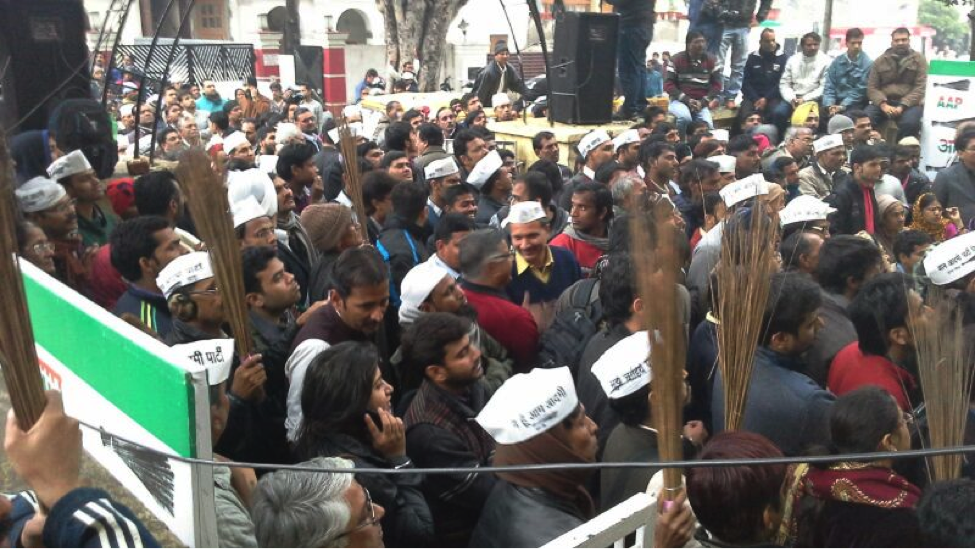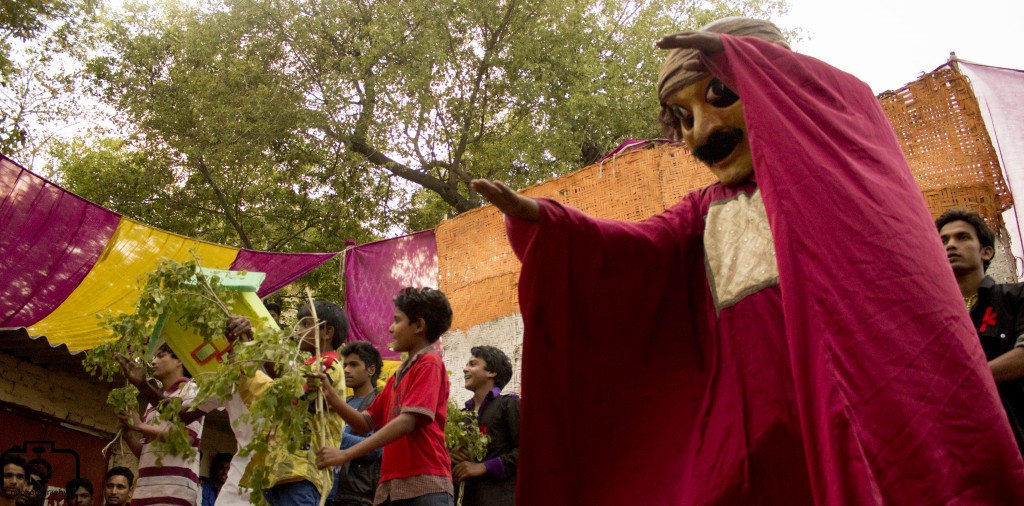A Modi coffee mug costs Rs 225 (roughly £2). A Modi t-shirt Rs 100 (£1).
Or you could go for a Modi key chain or a Modi laptop skin, for anything from Rs 229 to Rs 349.
As India begins to vote, the Bharatiya Janata Party’s Narenda Modi is not alone in his strategy to reach the Indian voters through political merchandise. Arvind Kejriwal of the Aam Aadmi Party has done a commendable job too.
Even as Delhi voted today, the capital city continued to see a scattering of political products in its markets and streets, in violation of the Election Commission of India code of conduct. As per EC regulations, publicity and campaigning should have ended on April 8.
The trend picked up from mid-March in Delhi and several parts of India, with the arrival of Holi, the Indian Festival of Colours. The market was then flooded with Modi water squirters, which carried the BJP candidate’s mugshots, along with his party symbol, the lotus.
The other popular BJP goodie on sale was the Modi coffee mug, which ranged from Rs 225 to Rs 349, depending on the quality you went for. On offer were also Modi shirts, video games, and clocks, mostly supplied by the online store, NaMo.
And the caps. Don’t forget the caps, which were reportedly visible among BJP supporters in more than one place in Delhi even on the polling day today. In the run-up to the election, caps of both the BJP and AAP were available. Mohammed Chaman of Sadar Bazar, who printed the caps, shed some light on the trend in an interview early this week.
“We sell around 2,000 to 5,000 AAP caps as compared to 700 to 1,000 Modi caps,” he said. Chaman said he also supplied Modi bags for Rs 15 and Modi badges for Rs 2.
The AAP caps ranged from Rs 2 to Rs 25. Flags with the broom symbol of the AAP were also available, costing Rs 10 to Rs 50. The AAP badges, priced at Rs 3, sold well, said Rajinder, a vendor in Sadar Bazar, who also revealed that he earned “12-15% profit” on each cap and flag he sold.
A look at the merchandise available online shows the costlier items are the Modi kurtas, silver coins, phone and tablet covers, mouse pads… wait, is that a Modi pepper spray? And surely, priced at Rs 24, that is not a Modi balm? Headache, anyone?
There is business and there’s promotion. The AAP volunteers began the trend, happily giving away caps. Not to be left behind, the BJP followed suit, distributing Modi T-shirts for free.
“Twice I called the supplier to place an order for a Modi t-shirt and both the times it was out of stock,” Singh, an ardent BJP supporter from Govind Puri, said. “Modi sells more because people feel that if Modi becomes the PM, India will be a bigger Gujarat model in terms of growth and development.”
In all this, the ruling Congress party seems to be lagging. Media reports say the Congress products with pictures of vice-president and possible PM candidate Rahul Gandhi are not hot items. Now that can’t be an omen, right?
Photo: Yotsana Tripathi

